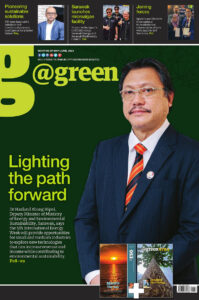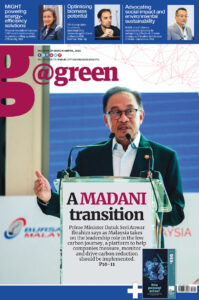Malaysian government looks into hydrogen as a new energy source
The discussion on utility decarbonisation is not new. In fact, according to the International corporate climate change specialists, the Science-Based Targets initiative (SBTi) in 2019, utility is the most critical sector which needs to reduce its carbon emissions dramatically. The efforts to decarbonise this sector are usually through the adoption of clean power energy.
In one of its sessions, Clean Power New Energy 2021 invited speakers Syed Malik Faisal Syed Mohamad, Steve Peters, Datuk Shamsul Bahar and Wan Hashimah to speak on this issue.
The panel discussion titled ‘The Clean Power Plan and the Future-Ready Utility – Where are we now?’ also discussed the implementation of clean power energy and the advent of future utility. The virtual session was moderated by David Turner, Vice Chairman of IPPF and the Managing Director of TPM Solutions.
“Malaysia has just announced that by 2025, we’re looking at 31 per cent of the energy mix coming from renewable energy and by 2035, 40 per cent,” shared Shamsul, the Chief Executive Officer of Malaysian Green Technology and Climate Change Centre (MGTC).
He stated Malaysia focused on solar energy as its renewable energy source, but the storage capability remained a challenge in its deployment. As a result, the government had to look into other new energy means, including the mini-hydropower that Shamsul said had been quite popular and was best deployed at the river basins.
“What else do we have? We have biomass. Gas can be stored. We have ocean thermal energy conversion (OTEC). That is a big thing because many countries are very much into it,” said Shamsul, adding that OTEC is quite expensive at the moment, but the energy that comes from the process is ‘recyclable’.
Hydrogen is gaining traction
However, Shamsul revealed the current buzzword, when it comes to renewable energy, was hydrogen.
Following his discussions with several industry players, Shamsul shared: “We’re formulating a grand design to come up with the action plans on what needs to be done. KASA and MOSTI will come up with a Hydrogen Economy Roadmap on how to ensure that the utilisation of hydrogen is being fulfilled.”
Wan, the Director of Green Technology Division at Malaysian Investment Development Authority (MIDA), then added: “Even for MIDA, when we look at the new growth area like hydrogen, we’re looking at the complete ecosystem for the industry. Not only manufacturing, but we also look into storage, transportation and application.”
Wan shared that the cost of hydrogen was extremely high. She also stated the safety of its storage and transportation must be the first thing that should be addressed.
“As long as we can reduce the cost of production and ensure the safety during the storage and transportation, the market will be endless,” she shared, stating that MIDA was engaging with industry players and public universities to come up with the ecosystem for hydrogen.
Wind energy and waste-to-energy
The Head of Business Development of PETRONAS, Syed Malik, then shared that the industry had done some assessments concerning wind energy. He said,
generally, the wind speed in the country was relatively low, compared to other markets. He stated that it was challenging to deploy wind power, but the study on potential areas for its deployment was still ongoing.
“Perhaps with a new wind speed technology and some initiatives of
Feed-in-Tariff (FiT) mechanism for wind, for example, it can be done,” said Syed Malik.
Peters, the Senior Energy Specialist for Asian Development Bank, then shared the waste-to-energy scenario in Malaysia. He said Malaysia had some interesting structural approaches to waste generation.
“The key to waste-to-energy is supply contracts,” Peters highlighted.
“The challenge with Malaysia is it is not like some of the developing member countries which are very high in organic (waste). It is not exceptionally high in cities, but in rural areas and small towns, it is.
“So, having a one-size-fits-all approach to waste management is probably not a great idea.”
Peters then pointed out the notable failure of the waste-to-energy plant like the one in Langkawi. He said the plant was sitting there doing nothing. He believed that this wasted opportunity was caused by the lack of engagements to carry the project forward and strengthen its enforcement. Peters then opined that Malaysia should focus on green hydrogen.
Wan then shared that MIDA offered some incentives for waste-to-energy to companies. She said MIDA also engaged with the State governments as waste management fell under State jurisdiction regarding its potential deployment.
“For this year, besides solar, we’re going to focus more on waste-to-energy and other non-solar projects,” she shared.
Turner added: “It is good to hear that there is a lot more focus on renewables in Malaysia now. Malaysia is blessed with many sources of energy, both fossil fuels and renewables. We have the means to move along the energy transition.”
— @Green








